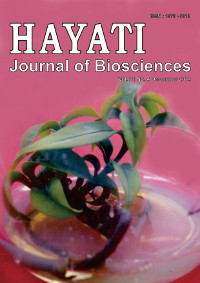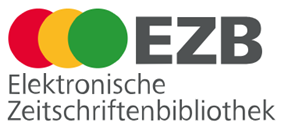N-Terminal His-Tagged AtTPR7 Interactions with Hsp70 and Hsp90 Proteins
Abstract
Post-translational protein import into organelles is an important process to maintain cellular functions. During preprotein transport in the cytosol, chaperones, such as heat shock protein 70 (Hsp70) and heat shock protein 90 (Hsp90), are functioning to prevent aggregation and to maintain the correct protein folding of preproteins. This research was conducted in order to understand the chaperone-mediated, post-translational import of preproteins into the endoplasmic reticulum of Arabidopsis thaliana. AtTPR7 (Arabidopsis thaliana Tetratrico Peptide Repeat 7) is found in the endoplasmic reticulum and contains TPR domain, which mediates protein interaction with cytosolic Hsp70 and Hsp90. In this study, recombinant AtTPR7 was expressed in E. coli BL21 (DE3)-RIPL cells and purified using an N-terminal His-tag. In order to study the interactions of the protein with the chaperones, we used pulldown and Western blot assays. We could thereby show that the N-terminally His-tagged AtTPR7 protein interacted with Hsp70 and Hsp90.Downloads
HAYATI J Biosci is an open access journal and the article's license is CC-BY-NC. This license lets others distribute, remix, tweak, and build upon author's work, as long as they credit the original creation. Authors retain copyright and grant the journal/publisher non exclusive publishing rights with the work simultaneously licensed under a https://creativecommons.org/


















.png) IPB University
IPB University Department of Biology
Department of Biology The Indonesian Biological Society
The Indonesian Biological Society 

